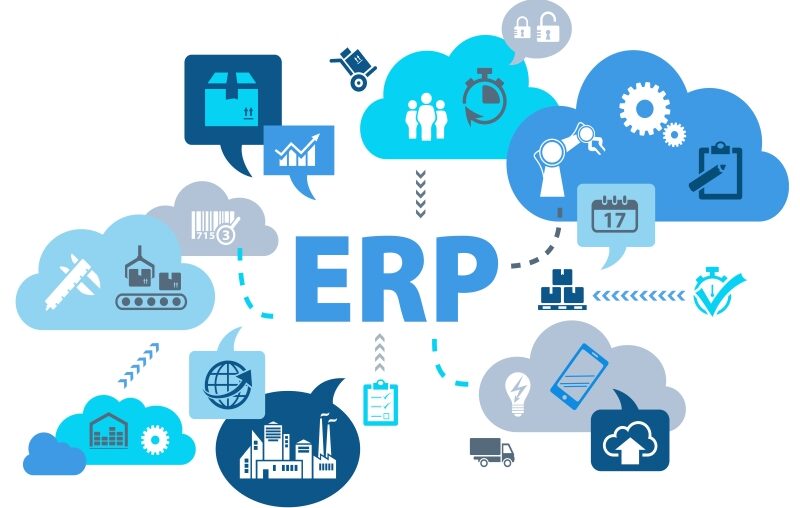Implementing an Enterprise Resource Planning (ERP) system can be a game-changer for your business. It helps streamline processes, improve efficiency, and provide better data insights. However, ERP implementation is a complex task that requires careful planning and execution. If done incorrectly, it can lead to wasted time, money, and frustration. To help you avoid common pitfalls, here are eight best ways to ensure your ERP implementation is a success.
1. Define Clear Goals and Objectives
Before you start the ERP implementation process, it is crucial to set clear goals and objectives. Understand why your business needs an ERP system and what you expect to achieve from it. Do you want to improve efficiency? Reduce operational costs? Enhance reporting capabilities? Having well-defined goals will help guide the implementation process and ensure everyone is aligned with the project’s purpose.
2. Choose the Right ERP System
Not all ERP systems are the same. Different solutions cater to different industries and business sizes. When selecting an ERP system, consider factors such as:
- Scalability: Will it grow with your business?
- Customization: Can it be tailored to your specific needs?
- Integration: Does it work with your existing software?
- User-Friendliness: Is it easy for employees to use?
- Cost: Does it fit within your budget?
Research best ERP software in uae, compare features, and choose the one that best suits your business needs.
3. Get Leadership Buy-In and Employee Support
ERP implementation affects the entire organization, so getting support from top management is crucial. Leadership buy-in ensures that the project gets the necessary resources and prioritization. Additionally, employees who will be using the ERP system daily should also be involved in the process. Their feedback and engagement can make the transition smoother and more effective.
4. Assemble a Strong Implementation Team
A successful ERP implementation requires a dedicated team that includes key stakeholders from different departments. This team should consist of:
- Project Managers to oversee the implementation
- IT Experts to handle technical aspects
- Department Heads to ensure alignment with business needs
- End-Users who will be using the system daily
Having a strong team ensures that all aspects of the business are considered during the implementation.
5. Plan the Implementation in Phases
Trying to implement an ERP system all at once can be overwhelming and lead to failures. Instead, break it down into manageable phases. A phased approach allows your team to focus on one aspect at a time, test the system, and make necessary adjustments before moving to the next stage. This reduces risks and ensures a smoother transition.
6. Provide Comprehensive Training
One of the biggest reasons ERP implementations fail is a lack of proper training. Employees must know how to use the new system effectively. Organize hands-on training sessions, provide user manuals, and offer ongoing support to help employees feel confident using the ERP system. The better trained your staff is, the more successful your implementation will be.
7. Test the System Before Full Deployment
Before fully rolling out the ERP system, conduct extensive testing. This includes:
- Functional Testing: Ensuring all features work as expected
- Performance Testing: Checking if the system can handle workload demands
- User Acceptance Testing: Letting employees test the system in real-world scenarios
Testing helps identify and fix issues before they impact daily operations.
8. Monitor and Optimize After Implementation
ERP implementation does not end after deployment. Regularly monitor system performance, gather user feedback, and make necessary adjustments. Conduct periodic evaluations to ensure the system continues to meet business needs. Continuous optimization will help you get the most out of your ERP investment.
Key Points:
- Define clear goals before starting ERP implementation.
- Choose an ERP system that fits your business needs.
- Get leadership support and involve employees.
- Build a strong implementation team.
- Implement the system in phases to reduce risks.
- Provide thorough training for employees.
- Test the system before full deployment.
- Continuously monitor and optimize the ERP system.
FAQs
1. How long does an ERP implementation take?
The duration varies depending on the complexity of the business and the ERP system. On average, it can take anywhere from six months to two years.
2. What are the biggest challenges in ERP implementation?
Common challenges include resistance to change, lack of proper training, data migration issues, and poor project management.
3. How can I ensure my employees adopt the new ERP system?
Involve them in the implementation process, provide thorough training, and offer continuous support to address their concerns and make the transition smoother.
By following these eight best practices, your business can successfully implement an ERP system and enjoy the benefits of increased efficiency, improved decision-making, and streamlined operations.



